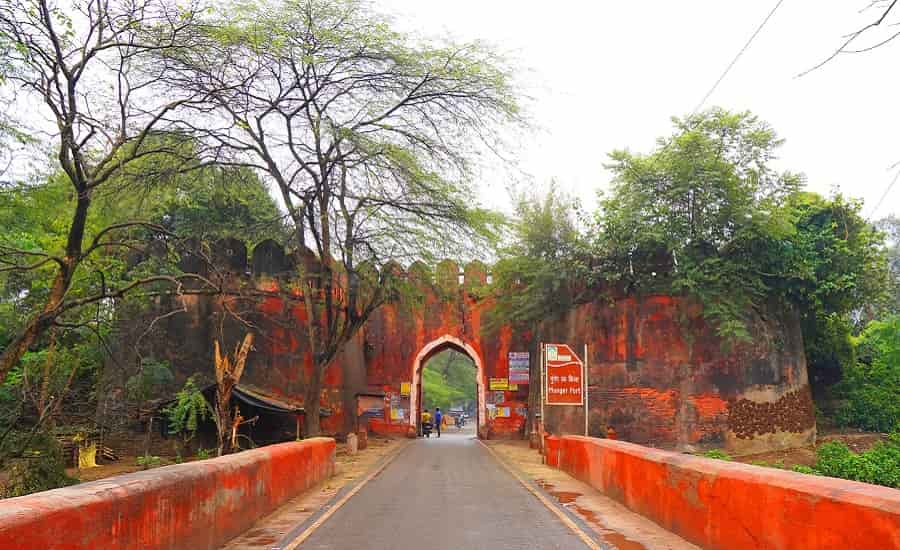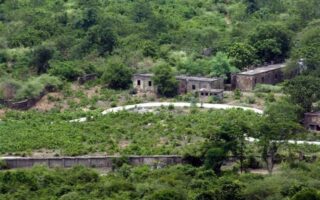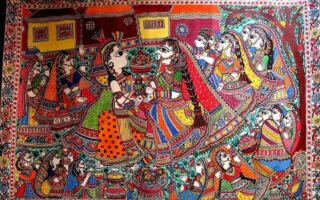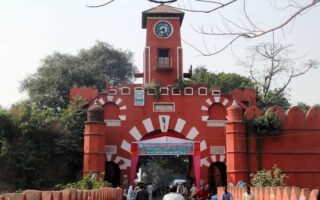Over 3000 years of grandeur and historical significance are showed in the prosperity of monuments excavated in Bihar. The prehistoric land of Bihar had a bystander to a few of the country’s impressive forts and palaces. Do visit Bihar to have a look at the splendid remnants of olden times. The following is the brief information on the forts of Bihar.
Munger Fort
- Location: Munger
- Constructed By: Mohammedan Kings
- Built: 14th century
- Timings: 6.00 AM to 7:00 PM
- Entry Fee: Free
- Time Required: 1-2 hours

Prolusion
The most significant and renowned monuments have their location at the Munger Fort. This fort is constructed on the rocky prominence known as Karnacharna which was associated with Raja Karna that projects into Ganga River, due to this river the fort is protected from north and west partly, it is safeguarded by a profound moat on the other side.
Traces of the Past
Munger does not comes out to be the 1st conquests of Muslims in Bihar below the reign of Ikhtiyar Khan Khilji, although it seems to be in 1330 AD, this was part of Muhammad Tughlaq’s kingdom of Delhi. After his rule this was under Jaunpur King and Sultans of Bengal. You would have heard about Todarmal, who was a statesman under King Akbar who bivouacked at Munger for a long time.
Appearance
The Munger fort covers an area of approximately 222 acres and bears a 4 kilometer circuit. The construction of the Munger fort belongs to the early Mohannedan Kings from India. There are 4 entrance ways to the fort provided by the rampart, with each side having an octagonal bastions at a regular distance, which bears the typical battlements. In the gates the one which is in the north is known as Lal Darwaza, this Darwaza has engraved stones in it and the style of it belonged to the Buddhist or Hindu’s. This fort is constructed on the rocky prominence known as Karnacharna which was associated with Raja Karna. It is mentioned by Bucchanan that the King’s house was constructed on this hill. The remains of it were in use by the British by a presenting battery; but soon after General Goddard constructed the current bungalow on the place as the dwelling place of the Commanding Officer, the view from this place is too mind blowing. You can have a look at the work of the king’s wife and the King in front part of the Bungalow which is an old platform.
There is a man-made rectangular knoll on either side of the hillock, this was once known as the Fort’s citadel. Unlike other forts there is no primitive name to this place but it’s still in books that there was a building here called Damdama Kothi which was demolished for the construction of the bungalow of the Collector.
Structures in the Interior of the Fort
Tomb of Pir Shah Nufa: The real dwelling place of the saint is still unknown, it is believed that formerly he came from Persia and went to Munger at the occurrence of the very popular divine of Muslim from Ajmer called Khwaja Moinuddin Chishti, it is believed that he passed away here in 1177 AD and was buried in a place in the close proximity of the rampart. The build is aroused within the fort’s south gate on the pinnacle of a small mound, in relation to 25′ in height, this according to Bloch; symbolizes the remains of few structures of the Buddhist. Covering the area of 100’ square, there is a wall that is bordered by a platform. Additionally, the build of the tomb bears a chamber and also a room for offering prayers and for the purpose of taking rest there is an attached rest room. Also there are circular turrets at the dome’s corner. The graves that belong to Mujavirs family are all around the tomb. There are a few stones which gives a resemblances to the remains of the shrines of Hindu’s which can be seen in the lower platform of the tomb to the south.
Shah Suja’s Palace: The palace of Shah Suja is now being converted into a jail which was before a palace of Mughal Prince Suja. The building is surrounded by huge walls on 3 sides and to the west side you can see a river. It mainly contains Zanana Palace or Khas Mahal which is now a trail ward, then is the Public Audience Hall or Diwan-I-Am, which is used as a prisoners school and is the armoury or the Top-Khana this walls bears a thickness of 10 inches to 15 inches which is currently a dormitory. On the western side attached to the palace was the existence of a small mosque now which is used as a godown to store ration.
Mulla Muhammed Said’s Tomb: This is situated in the south western direction on the bastion. A Persian poet who came down to India from Mazandaran which was close to the Caspian Sea, at the time of the reign of Aurangzeb was Mulla. He was being chosen as a tutor to Zaibunnisa Begum the King’s daughter. Later he was appointed by Aurangzeb’s grandson Azim Shah when he was Bihar’s viceroy. Mulla passed away in 1704 AD and till 20th centuries earlier his tomb was in existence, soon after the demolishment of the tomb the grave was detached.
Chandisthan: Chandisthan, has a shrine which Buchanan mentioned as Vikram Chandra. There is an associated tradition of Karna Vikram with this place. This place was considered scared at the era of Buchanan.
Ghat on Ganges, the Kastaharni: The rivers Uttara-Vahini means bends towards the northern direction, this is the thing which made this spot a scared destination for the Hindus. The holiness of the site may be of substantial antique, as is possibly indicated by the message of the Gahadavala King Govind Chandra of Kannauj, that records a contribution made by the king after taking bath in Ganges at Mudgagiri on the occurrence of Akhshaya Tritiya fiesta. On the entranceway walls of the ghat is the message of the king Bhagiratha and the structure of a Siva shrine. Several sculptures and carvings have been revealed from this region in 1903 by Bloch. An emblazoned picture of Dhyani Buddha bearing the typical Buddhist Creed is currently placed in the Kolkata’s Indian – Museum.
Rohtasgarh Fort
- Situation: Rohtas, Bihar 821311
- Built by: Gahadavala dynasty, Khayaravala dynasty, Sur Empire, Mughal Empire
- Drawing Cards: Ganesh temple, Aina Mahal, Takhte Badshahi, Jama Masjid
- Timings: 5 am–7 pm
- Entry Fee: No Entry Fees
- Time Required: 1-2 hours

The Rohtasgarh Fort is located in the district of Rohtas which is at a distance of 45 kilometres from Dehri and from Sasaram its just 39 kilometres away. It is the situated on the hills of Kaimur .The name of the fort comes from a character in mythology, Rohitashwa who was the son of the great King Harishchandra. When the kings life was in danger he stayed here. The construction of the fort is on a height of 1500 feet on a plateau above sea level. There are 2000 steps to climb this hill till the top. After climbing all the steps you will reach the gate of the fort. From this gate the Rohtasgarh Fort is at a distance of 2 kilometres, this fort is a stunning example of the Mughal style of architecture.
As we all know history is a subject which is very long and interesting so is the case with the history of the Rohtasgarh Fort. Though the origin of the fort has lost its existence in history, the monuments that you can see here have their origin from the era of Sashanka King of the 7th century. Prithviraj Chauhan captured this fort in the medieval era. The prominence of this fort was raised when this was taken over in 1539 by Sher Shah Suri by a Hindu King. When Sher Shah Suri was ruling there were 10,000 men guarding this fort. Jama Masjid was constructed in the interior of the complex of the fort by a solider of Sher Shah Suri, Haibat Khan. Man Singh, general of Akbar looked over the fort in 1588. Takhte Badshahi was the palace that was built Aina Mahal was also constructed for his main wife and in the front gate was the Hathiya Pol.
Habsh Khan’s Mausoleum, the Maqbara of Sufi Sultan and Jami Masjid are the other structures on the outer side of the palace. After taking a walk for a kilometre you will find the palace of Man Singh and a temple of Lord Ganesh which was constructed in the Rajputana style of architecture. Most of the part of the fort was destroyed by the British after the war of Buxar and capturing Rohtasgarh Fort. The presence of several Muslim and Hindu structures that are present in the fort displays the rich and wonderful past of the Rohtasgarh Fort. The architecture of the building is called the Indo-Islamic style with a local touch in it.
Vishal Fort
- Situation: Basarh Village, Vaishali, Bihar
- Constructed By: King Vishal
- Timings: 6 AM – 6 PM
- Entry: Free
- Trip Duration: 30 Mins to 1 hour

The location of the Vishal Fort is at a distance of 1 kilometre from the parliament of the primitive times. The Fort is named after King Vishal.
Vishal Fort was an element of the world’s oldest democracy. The fort gives an extremely mind blowing look, if you look at its construction you would identify that its is very good. After visiting Vaishali you can also visit the museum here.
The items on display in the museum here are the artifacts that were excavated from Vaishali. The tourist place worth visiting in Vaishali are Abhishek Pushkarni, Dargah of Miran Ji and Stupas. Buddha’s ashes were found in the stone caskets of the Stupas of Vaishali. The story behind Abhishek Pushkarni is that before the coronation of the king he was inuncted with water of his own tank.


